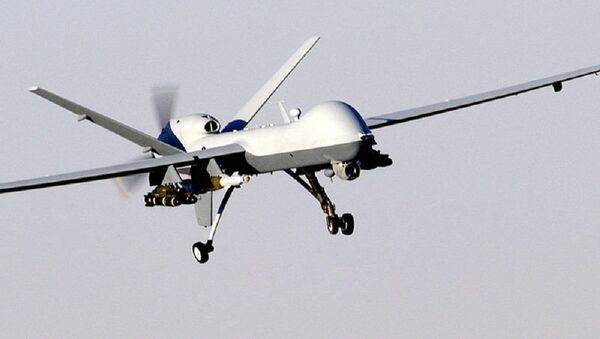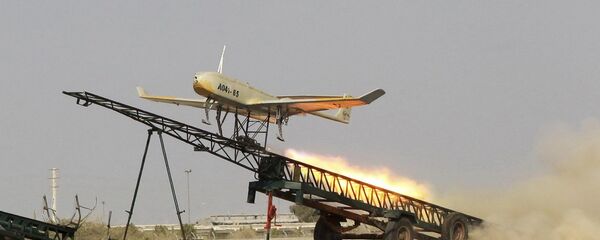As the US continues to launch launch spy drones over Syria, Iraq, and the Persian Gulf, Iran and other countries have been factoring UAVs more heavily into efforts to counteract Washington’s tactics.
In response to US ships targeting the Islamic Revolutionary Guard Corps’ navy, Tehran has been testing and deploying suicide drones that they claim can go toe-to-toe with American vessels.
"The way they affect us is they provide Iran with a layered capability where they can use their fast boats, they can use cruise missiles, they can use radars, they can use UAVs to potentially dominate specific areas," said Gen. Joseph Votel, head of the US Central Command and overseer of US operations in the Persian Gulf.
US armed forces are consistently using Reaper and Predator drones to locate, identify and bomb militants and their hideouts. Daesh militants in Syria and Iraq have become skillful in spying on US-backed coalition forces, by reconfiguring off-the-shelf-drones. According to propaganda videos, the extremists attach small explosives and dropping them onto vehicles and people in and near the city of Mosul.
Iran has been providing guidance for Shiite militia groups, also known as popular mobilization units (PMUs) in Iraq, while keep a close eye on US forces that are advising Iraq regular forces nearby.
The US Army’s Foreign Military Studies Office at Fort Leavenworth, Kansas, released an analysis about the jamming instrument, saying, "The device, which resembles a rifle, is capable of locking onto a drone and jamming its communications…Once the device locks onto a drone, its operator is no longer in control. It is also reported that it has hacking capabilities, potentially rerouting a targeted drone. Additionally, its hacking abilities may allow the device user to safely land a drone."
Islamic terrorism analyst and retired Army officer Robert Maginnis told the Washington Times that Iran has been responsible for American deaths before, and likely will be again.
He said, "Iran’s friends, the Russians and Chinese, for mutually beneficial reasons share technologies that could potentially compromise our assets in the Persian Gulf," adding, "Keep in mind Iran’s Islamic Revolutionary Guard Corps created the terrorist group Hezbollah that killed hundreds of US Marines in a barracks outside of Beirut in October 1983. The Iranians would like to do the same against a US warship in the Gulf."
Maginnis claimed, "Iranians still chant 'Death to America' at national rallies, and therefore we should expect their behavior to match their rhetoric."
In October 2016 Iran unveiled a stealth suicide drone designed to strike targets on land and at sea. The craft can fly as low as two feet above a surface to avoid detection and as high as 3,000 feet. Beyond deploying guided smart-bombs, the craft is powered by two propellers and uses advanced optics that can function in wet conditions and at night.




